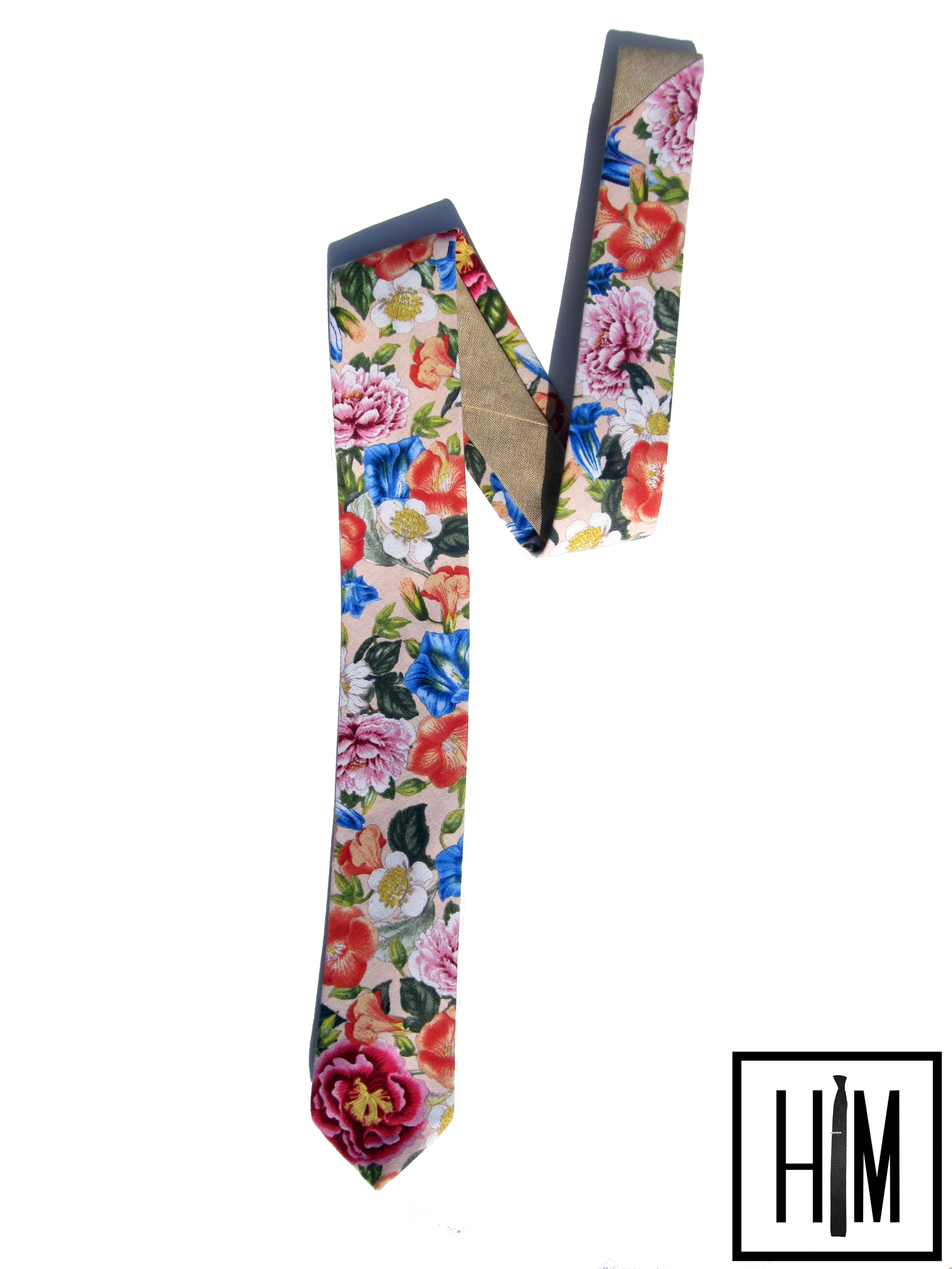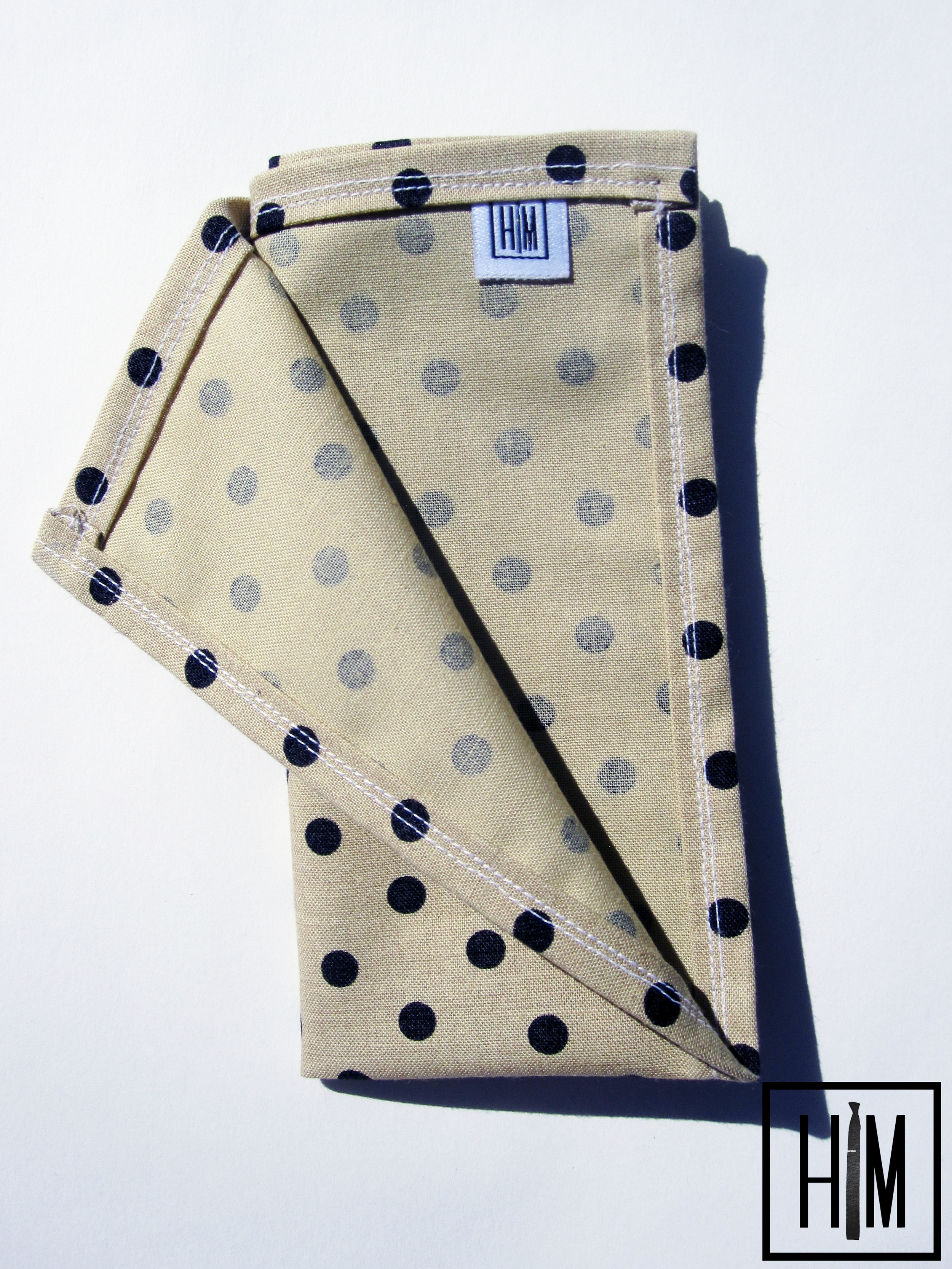Denver Vendor Spotlight: HIM Clothing
How would you describe your style? Are there any artists / designers that you particularly look up to?
Contemporary style, vintage construction. Our style really comes from the artistic side of our personalities. I'm an artist by trade, so I always match our fabrics based on a lot of color theory and pattern complements. Chris is a ceramicist, so he's always striving for better construction and paying attention to those little tiny details.
We combine the two to make an incredibly unique, but contemporary fashioned product. Our favorite aspect, however, is our vintage construction. We make everything on a pair of 1950s Singer Featherweight sewing machines that were hand-me-downs from my great-grandmother. Beyond that, we spent an entire year studying tie making, making sure we do it how old world tailors do. Of course we add a bit of our own personality, but we like to think we combine the old and the new world of men's accessories.
As far as inspiration goes, I've been really drawn to the craft movement, not even just with clothing, but everywhere. There's a rebirth and renaissance of everything from food and liquor to painting and clothing. I've drawn inspiration from local companies like
Leopold Bros to other accessory companies like Shwood Eyewear.
What do you feel makes your work unique and truly your own?
It has to be the machines. They each weigh around 11 lbs and are probably some of the smallest machines anyone has ever seen. They're old, but they're little workhorses. Our primary machine made it through hundreds of hours of work before it needed any maintenance. People always ask why we still use them because newer machines are so much easier and faster. I just tell them that that's all I've ever known. We take pride in the fact that that's all we use.
When do you feel the most creative?
Whenever Chris and I start looking for materials or go fabric shopping, we start to get a lot of ideas. Looking at different patterns and colors gives us that little spark we need to make something new. We also like to go around to different thrift shops and vintage stores in town and get inspiration. We see how older things were made and we get a lot of ideas for how to incorporate their design into what we already make. We actually modeled our tie packaging on an old '40s tie that we found in a vintage store down on Broadway.
What is your creative process like?
The entire process is pretty methodical and detailed. To make a tie, there are five essential steps: cutting, stitching, forming, hand sewing, and, what we like to call, 'the details.' We try to work in waves for larger orders, doing one step at a time, but if we need to work fast, we'll do an assembly line style process. I'll cut and then Chris will stitch, so on and so forth. We end up getting a good enough groove that we can knock out a lot of product in a pretty small amount of time. After that, we package everything in our hand cut packaging that we make and design in house.
When we're working, we'll either watch a cooking show marathon or listen to hours of stand-up comedy, coupled with what we call 'tie beers.' If we have a late night of working, we'll get a six pack and just enjoy it while we work together. We've been best friends since we were five years old, so it reminds us that we're not just working, but we're hanging out and having fun too.
What's the coolest artistic tip you've ever received?
My lithography professor in college always had a mantra that I loved: "I look good. I feel good. I am successful." It isn't exactly an artistic tip, but what it told me was to make sure I'm in the right mood to start working and creating. Whenever I paint or draw, I always have music on that I can zone out to. The same is true for Chris and I when we work.
As any artist knows it is very easy to look at your own work and only see the flaws, while others either don't notice them or even think they add something to the piece. Sometimes little imperfections can be what attract you to an object; you might be looking through a stack
of identical shirts and you end up choosing the one with a random extra strip
of color.
We have a desire to be unique and different which is part of why handmade products are so popular. In an episode of *Parks and Recreation*, Ron Swanson is making wooden chairs and abruptly smashes one because, "It was too perfect. It looked machine-made." We're both perfectionists so Chris likes to reference this any time we find a defect, because otherwise we would obsess over it.
Where can we learn more about you?
You can learn more about our work and our story on our website at himclothing.com.





